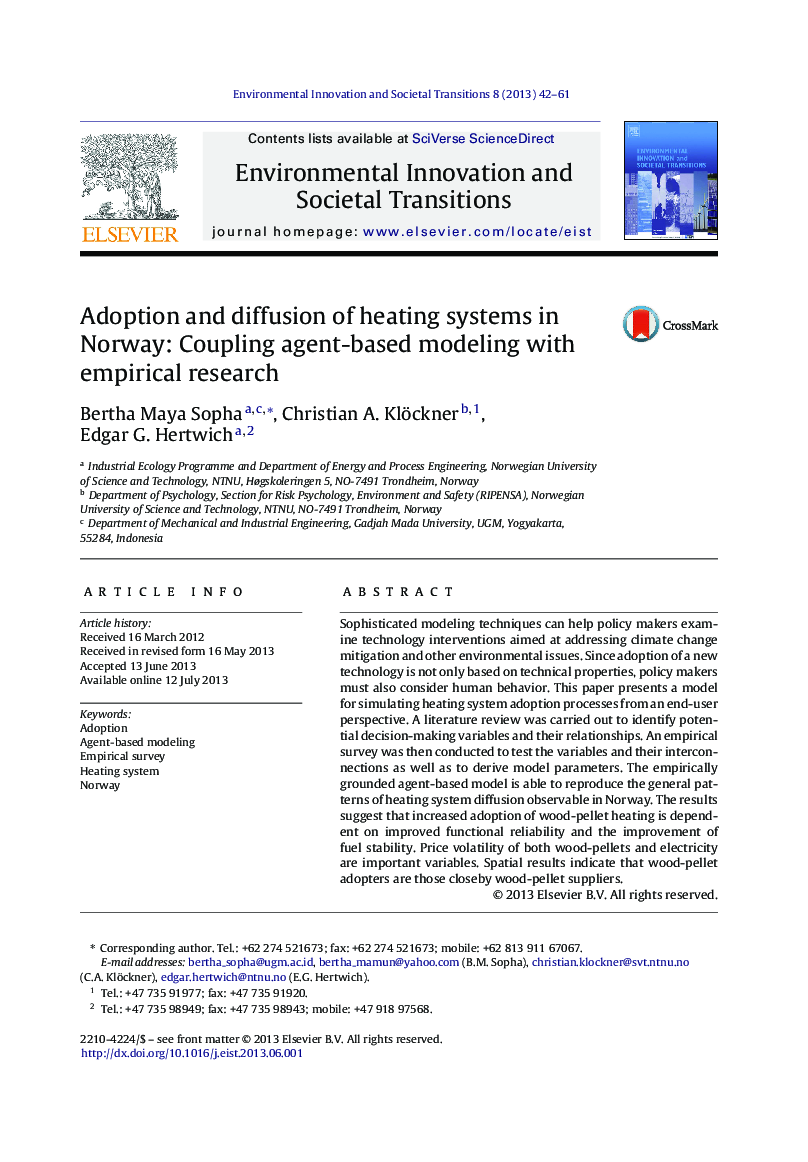| کد مقاله | کد نشریه | سال انتشار | مقاله انگلیسی | نسخه تمام متن |
|---|---|---|---|---|
| 108234 | 161890 | 2013 | 20 صفحه PDF | دانلود رایگان |
• Coupling agent-based model (ABM) with empirical research is a promising technique.
• A hand-tailored empirical survey was conducted to specify and parameterize the model implemented in ABM.
• The model simulation is able to reproduce the general patterns of heating system diffusion observable in Norway.
• Scenario results suggest that functional reliability of wood-pellet heating and price volatility are important variables.
Sophisticated modeling techniques can help policy makers examine technology interventions aimed at addressing climate change mitigation and other environmental issues. Since adoption of a new technology is not only based on technical properties, policy makers must also consider human behavior. This paper presents a model for simulating heating system adoption processes from an end-user perspective. A literature review was carried out to identify potential decision-making variables and their relationships. An empirical survey was then conducted to test the variables and their interconnections as well as to derive model parameters. The empirically grounded agent-based model is able to reproduce the general patterns of heating system diffusion observable in Norway. The results suggest that increased adoption of wood-pellet heating is dependent on improved functional reliability and the improvement of fuel stability. Price volatility of both wood-pellets and electricity are important variables. Spatial results indicate that wood-pellet adopters are those closeby wood-pellet suppliers.
Journal: Environmental Innovation and Societal Transitions - Volume 8, September 2013, Pages 42–61
